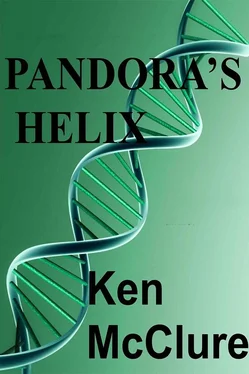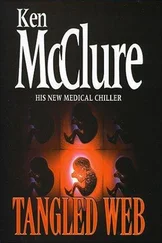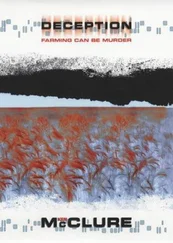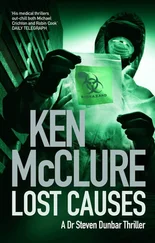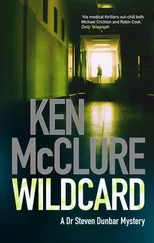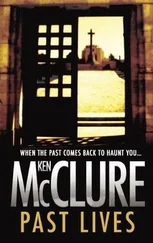Ken McClure - Pandora's Helix
Здесь есть возможность читать онлайн «Ken McClure - Pandora's Helix» весь текст электронной книги совершенно бесплатно (целиком полную версию без сокращений). В некоторых случаях можно слушать аудио, скачать через торрент в формате fb2 и присутствует краткое содержание. Год выпуска: 1997, ISBN: 1997, Издательство: Simon & Schuster, Жанр: thriller_medical, на английском языке. Описание произведения, (предисловие) а так же отзывы посетителей доступны на портале библиотеки ЛибКат.
- Название:Pandora's Helix
- Автор:
- Издательство:Simon & Schuster
- Жанр:
- Год:1997
- ISBN:978-0-684-48163-7
- Рейтинг книги:4 / 5. Голосов: 1
-
Избранное:Добавить в избранное
- Отзывы:
-
Ваша оценка:
- 80
- 1
- 2
- 3
- 4
- 5
Pandora's Helix: краткое содержание, описание и аннотация
Предлагаем к чтению аннотацию, описание, краткое содержание или предисловие (зависит от того, что написал сам автор книги «Pandora's Helix»). Если вы не нашли необходимую информацию о книге — напишите в комментариях, мы постараемся отыскать её.
Pandora's Helix — читать онлайн бесплатно полную книгу (весь текст) целиком
Ниже представлен текст книги, разбитый по страницам. Система сохранения места последней прочитанной страницы, позволяет с удобством читать онлайн бесплатно книгу «Pandora's Helix», без необходимости каждый раз заново искать на чём Вы остановились. Поставьте закладку, и сможете в любой момент перейти на страницу, на которой закончили чтение.
Интервал:
Закладка:
“All here,” said Thomas, touching his briefcase.
“Good,” said Heaton.
“Can I ask which medical staff University College have on the committee for this application?” asked Neef.
Heaton looked at the paper in front of him and said, “The Dean of the medical school, Dr Alan Brooks and the head of their molecular biology section, Dr Farro-Jones.”
“David Farro-Jones?” exclaimed Pereira.
“Yes, do you know him?” asked Heaton.
“We were post-docs together at Johns Hopkins in Baltimore.”
“Then you’ll obviously speak the same language this afternoon,” said Heaton.
Ostensibly, Heaton had been referring to technical language but Neef wondered if Heaton hadn’t said what he had as an in-joke for those present who knew David Farro-Jones. Although he and Pereira spoke English, there was a world of difference between Farro-Jones’ Oxbridge accent and Pereira’s New York patois. He also wondered about the expression on Pereira’s face when he heard Farro-Jones’ name mentioned. Maybe it had been surprise or maybe there had been more to it.
“Is that all right then?” asked Heaton, looking round the table at everyone in turn. “Good. Over to you, Mr Thomas.”
Steven Thomas gave everyone a potted history of Menogen Research along the lines which Andrew D’Arcy had already reported to Heaton and Neef two days before.
“It has been our good fortune over the last three years to have had the services of Max Pereira here and several of his colleagues whom he brought with him from the world of academia. These brilliant researchers have designed a range of vectors and strategies which we believe will be successful in delivering functional genetic material to where it’s most needed in the body. Testing in lab animals has given encouraging results and now the time has come to use the technology for real. We have obtained all the relevant safety certificates and ethical approval at national level. What we need now is the collaboration and cooperation of a first rate hospital like St George’s and its staff — in particular, Dr Neef and the paediatric oncology unit. I think it is not outside the bounds of possibility that here, together, we might make significant strides forward in medical science.”
“Thank you, Mr Thomas,” said Tim Heaton getting to his feet as Thomas sat down to polite applause. “I think we all echo these sentiments.”
Neef smiled at Pereira and said, “If you’d care to come with me, Doctor. I’ll show you round the unit and you can meet the patients.”
“Sure,” replied Pereira.
Four
“Maybe we should talk first and then I’ll show you around the unit, suggested Neef.
“Whatever you say,” replied Pereira.
Pereira was nearly a foot shorter than Neef, despite the fact he was wearing cowboy boots with Cuban heels. Neef had to modify his stride to allow him to keep up as they crossed the courtyard from the administrative block to the unit. Pereira was also weighed down by a large battered briefcase which had the remains of many airline stickers plastered over one face of it.
Neef introduced him to Ann Miles and asked if coffee was possible.
“Of course,” she said. “How do you like yours, Dr Pereira?”
“White, lots of sugar,” Pereira replied without turning to face her. He had taken off his leather jacket but had kept his beret on.
Ann Miles exchanged an amused look with Neef before closing the door behind her.
“Are you medically qualified, Dr Pereira?” asked Neef.
Pereira shook his head. “My first degree was in medical microbiology, then a PhD at UCLA followed by post-doctoral fellowships at Harvard and Johns Hopkins, and then I joined Menogen.”
“You’re a molecular biologist?”
“I am but people tend to come to molecular biology from a range of scientific backgrounds. I was primarily a virologist, David Farro-Jones has a medical degree, I think.”
“He has,” agreed Neef. “But he keeps telling me that molecular biology is the science of the future.”
“He’s not wrong,” replied Pereira.
“But without a medical degree there’s no question of you being let loose on the patients on your own.”
Pereira laughed out loud. “That’s understood,” he said. “I couldn’t stick a plaster on a cut finger. On the other hand, I’ve forgotten more about viruses than most medics will ever know.”
It was Neef’s turn to smile. “I’ll gladly concede that,” he said. “So we work as a team.”
“Absolutely.”
“Then I have to know exactly what you have in mind. I must insist on understanding the theory behind everything you propose to do before I agree to it.”
“How much do you know about Gene Therapy?”
“I know that it involves introducing new genes into patients’ cells and that getting them in can present problems, beyond that, not a lot.”
Pereira nodded. “Constructing the working gene in the lab is the easy part. As you say, it’s getting it into the patient’s own cells that gives us the problems. We obviously can’t inject copies of the new gene into cells one at a time; we’d have to do it a hundred million times to even make a start on a tumour so we have nature do it for us. We use viruses as transport vectors.”
“Live viruses?” asked Neef.
“Live but disabled,” said Pereira. “We disable the virus genetically so that it can’t replicate itself inside the patient, then we introduce the new gene to the virus in the lab and let the virus carry it into the patient’s cells for us.”
“A sort of localised infection?”
“You got it.”
“It sounds straightforward,” smiled Neef. “So what are the pitfalls?”
“Lots,” admitted Pereira. “Viruses are still viruses, disabled or not. If we use too many virus particles the patient may react badly against the introduction of foreign protein, particularly if we have to repeat the treatment.”
“Anaphylactic shock?”
“That’s a possibility. On the other hand, if we use too few the whole strategy might not work. There are also another couple of things you should be aware of if you’re not already.
“Tell me.”
“Although the viruses we use are disabled by removing their replicating machinery, some researchers have suggested that they might reactivate themselves inside the body by finding their missing bits.”
“I don’t think I follow. How?”
“Many of the viruses we use as gene carrying vectors are pretty common. Most of us have been infected with them before through having colds and flu. The worry says that many of us will still have the odd live virus particle lurking around inside us. If the disabled vector virus should come up against one of these old particles it’s just possible that it could reactivate itself through DNA recombination.”
“You mean it could get back its missing bits and set off a full scale infection?”
“Yeah. But being aware of the problem is half way to solving it, as Grandma used to say. We at Menogen use retrovirus technology which doesn’t have that problem but it could have others.”
“Anything I should know?”
“Yes,” said Pereira. The advantage of using retroviruses is that they integrate into the host cell’s chromosome, the disadvantage is that some people think they could trigger off cancer.”
“I had read about that possibility,” admitted Neef.
“But this wouldn’t be a problem with your patients,” said Pereira. “They’ve already got the big C.”
Neef looked at Pereira who had opened his briefcase and was rummaging inside.
Neef looked at Pereira long and hard. He couldn’t make up his mind about the man. He was certainly different.
“What exactly are the chances of Gene Therapy actually helping my patients?”
Читать дальшеИнтервал:
Закладка:
Похожие книги на «Pandora's Helix»
Представляем Вашему вниманию похожие книги на «Pandora's Helix» списком для выбора. Мы отобрали схожую по названию и смыслу литературу в надежде предоставить читателям больше вариантов отыскать новые, интересные, ещё непрочитанные произведения.
Обсуждение, отзывы о книге «Pandora's Helix» и просто собственные мнения читателей. Оставьте ваши комментарии, напишите, что Вы думаете о произведении, его смысле или главных героях. Укажите что конкретно понравилось, а что нет, и почему Вы так считаете.
